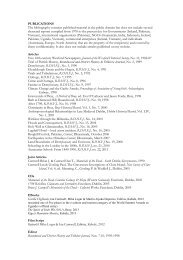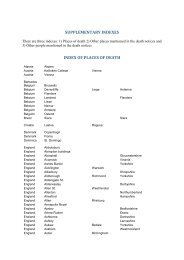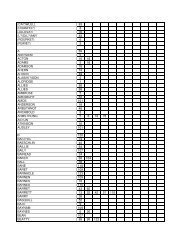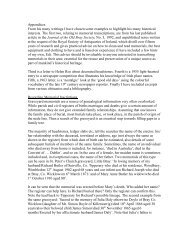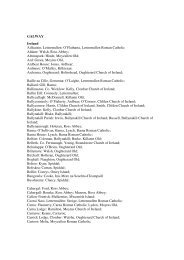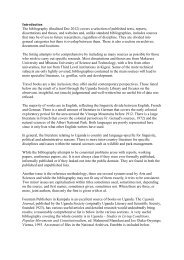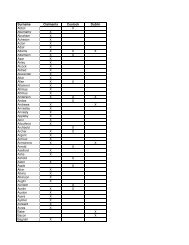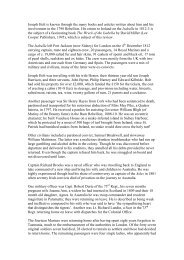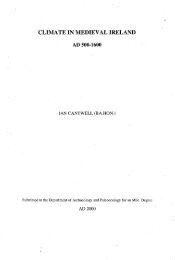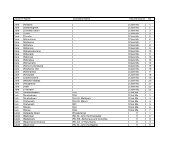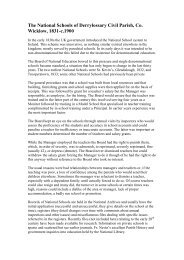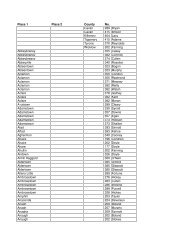SOCIETY AND SETTLEMENT IN GLENDALOUGH ... - Ian Cantwell
SOCIETY AND SETTLEMENT IN GLENDALOUGH ... - Ian Cantwell
SOCIETY AND SETTLEMENT IN GLENDALOUGH ... - Ian Cantwell
- No tags were found...
Create successful ePaper yourself
Turn your PDF publications into a flip-book with our unique Google optimized e-Paper software.
The distribution ofraths on the western side ofthe Vartry river is, so tar, unique. Itsdistribution pattern reflects a directly controlled monastic estate as distinct frommonastic lands leased to secular tenants. At it's core there are five large circularenclosures ofDerrylossary (Ballincorbeg), Ashtown, Roundwood, Glassnamullen andTomdarragh which may be the oldest parts of the estate. However the lack ofarchaeological excavation and literature sources means that we have no idea how theestate developed or how and when Glendalougb came into control ofit. All that can beassessed is the cumulative distribution.These large raths appear to have been farms in their own right but the Law tracts donot appear to cover fann size within an ecclesiastical framework, tmlike in the secularcontext162.It is impossible to say what the farm size may have been thoughtopographical boundaries, such as rivers and ridges, probably predominated.There are two sets of rath concentrations in Sbragbmore (a sub-denomination ofMullinaveiguethat became a townland during the Ordnance Survey mapping of 1830s)and Glassnamullen. The former has four enclosures of around 15m diameter and thelatter one. These appear to be bailes and probably housed farm employees. Theappearance ofsettlement clusters are unusual in a landscape predominated by dispersedsettlements,Denylossary, a bivallate rath of about 150m in diameter, was probably the mostimportant and in the post reform period became the parish centre. It is unusual for anecclesiastical centre to be bivallate, thereasonsfor this are unknown. It mayhave had avillage (baile) and mill attached, though the sources for these come from the 16thcentury. The division into the townlands ofBallincorbeg and Raheen may have been inthe 13th century or later. According to the 1841 census Raheen town<strong>Ian</strong>d was in the162Stout M, (1987), p. III39



